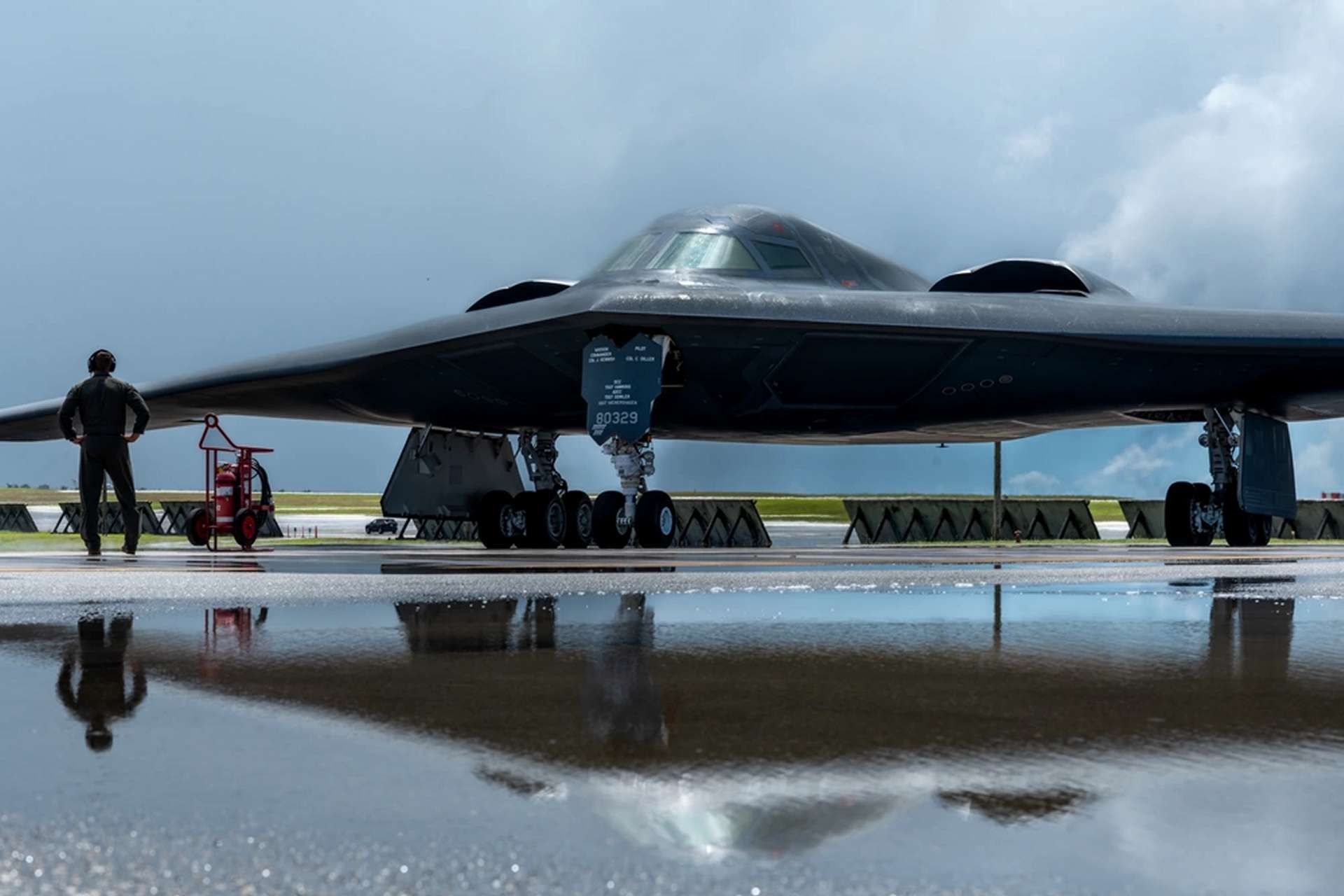Breaking News
United States Redeploys B-2 Stealth Bombers Amid Tensions with China and North Korea.
The U.S. Air Force has redeployed its B-2 Spirit stealth bombers to Guam for the first time since 2019, in response to actions by China and North Korea in the Indo-Pacific. These aircraft, capable of carrying both conventional and nuclear payloads while evading radar detection, are participating in the 'Valiant Shield 24' exercise alongside Marine Corps F-35B aircraft.
Follow Army Recognition on Google News at this link

The B-2A Spirit, built by Northrop, is an advanced technology stealth strategic bomber. (Picture source: US DoD)
Valiant Shield 24 is a large-scale, biennial military exercise organized by the U.S. Indo-Pacific Command. For the first time, it includes multinational participation, integrating allied and partner forces for coordinated operations across multiple domains. This exercise, held from June 7 to 18, 2024, on Guam, the Commonwealth of the Northern Mariana Islands, Palau, and surrounding maritime areas, aims to enhance interoperability and operational readiness of the armed forces.
In this context, the B-2s are crucial for demonstrating global strike capability and the U.S.'s determination to support its allies and partners. Defense analysts view this redeployment as a direct response to China's actions in the South China Sea and the broader region.
Andersen Air Force Base in Guam, operational since the 1940s, plays a crucial role in U.S. strategic operations in Asia and the Pacific. Although B-2s have rarely been deployed to Guam since 2019, they regularly use aerial refueling capabilities to conduct long-range strike missions from Whiteman Air Force Base.
The B-2A Spirit, built by Northrop, is an advanced technology stealth strategic bomber. This aircraft, which first flew on July 17, 1989, and entered service in April 1997, is scheduled for retirement in 2032. With an initial investment of $45 billion in 1996 (equivalent to $73 billion today), each unit cost about $2.2 billion in 1998, or $3 billion today. A total of 21 B-2s were built.
The B-2 Spirit is designed for missions with a crew of 2 to 3 people. It is powered by four General Electric F118-GE-100 turbofan engines, each providing 77 kN of thrust, or about 8,116 kgf. These engines enable the aircraft to reach a cruising speed of 870 km/h and a maximum speed of 1,010 km/h (Mach 0.95). The aircraft's wingspan is 52.43 meters, and its length is 21.03 meters.
In terms of weight, the B-2 Spirit weighs between 45,360 and 49,900 kg empty, and can reach a maximum weight of 158,760 kg with armament. It can operate at a ceiling of 15,200 meters and has a range of 11,000 km, allowing it to carry out very long-range missions without refueling. The aircraft's wing loading is 329 kg/m², which contributes to its stealth and maneuverability capabilities.
The B-2 is capable of carrying a variety of internal weapons, including up to 16 SRAM 2 or AGM-129 missiles, as well as B61 and B83 nuclear bombs. This internal weapon-carrying capacity, combined with its stealth characteristics, makes the B-2 Spirit particularly effective for penetrating enemy air defenses and striking high-value targets with great precision. The B-2A Spirit remains a central element of the U.S. nuclear deterrence strategy thanks to its unique combination of stealth, range, and payload capacity.
Simultaneously, the United States is considering deploying Patriot defense systems in Palau and strengthening its presence in Australia to counter China's growing influence. Initiatives to create Combined Maritime Forces in the Indo-Pacific are also under discussion to address common challenges in a non-military manner.
The return of the B-2s to Guam marks a step in U.S. deterrence and diplomacy, underscoring the United States' willingness to support its diplomatic efforts with concrete demonstrations of power in an increasingly complex region.


























